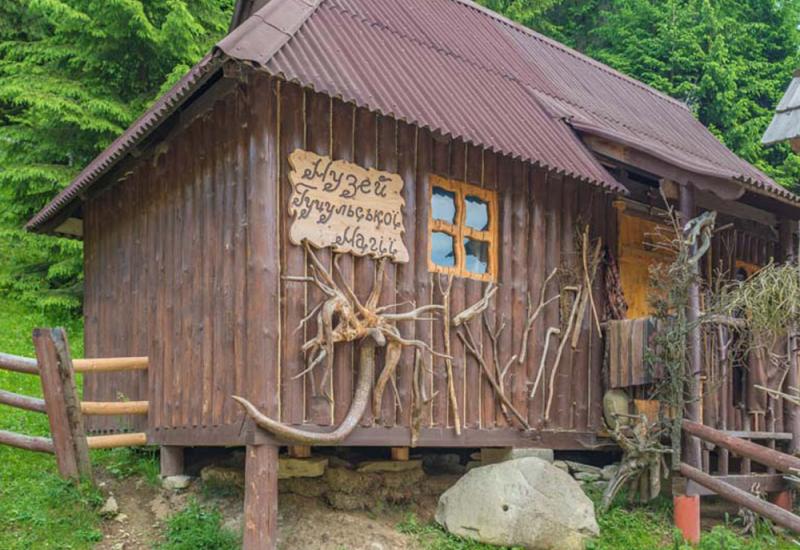Recently, Ukrainian museums have begun to wake up from chronic nap, learn the experience of European professionals and open new exhibitions for visitors’fun. You may find whatever you want during your travels around Ukraine: a museum of recycled materials, a trolley ticket, sewage, toilet history, fat, sex, and finally - mollfaria. A dozen years ago, few have heard about these sorcerers, and now – a mandatory attraction for holidaymakers in the Carpathian region.
Molfar Yura, endowed with supernatural abilities, who could move away a thunder cloud , on the contrary, cause rain, save cattle or kill a person, was described by Myhailo Kotsyubinsky in the story “The Shadows of Forgotten Ancestors”. Molfaria as an integral part of Hutsul's Clairvoyant traditions is a direct legacy of pagan cults that never disappeared especially in these places. And now in Hutsulshchyna there are stories about the molphars, the mysterious sorceries who are still “found” in these places – at least, so say the locals.

The owner of the Vodograi Carpathian Hotel Complex, located in Verkhovyna, gathered in one of the houses several things used by magicians, in particular Andriy Atamanyuk (Goya) and Myhailo Nechay. Each exhibit is accompanied by a legend, and whether to believe in it or not depends on the audience. Here is a mortar in which Myhailo Nechai rubbed the potion. And this is the stick, which stalled strife and marital quarrels. When a snake eats a frog, it is necessary to touch it with such a stick. Then the weapon acquires magic power. And with this knife – “a thunderous chepelik” - Myhailo dispersed the clouds. A well-known case when in 1989 he provided good weather in Chernivtsi during the festival “Chervona Ruta”. And here is a photo of the famous “sorceress”, which lived on the Bukovetsky pass - Paraska Sokolovska. It is told that she had such abilities that could call the snakes from the surrounding forests. When she died, they were afraid to go into her house, for it was full of creepers. When they buried a woman, then they left. Here is the violin of Mogur, a famous local violinist. People say that it sometimes played itself.
But the traditional local musical instrument - drimba - adjusts the energy field of the person (by the way, the tragically killed in 2011 "the last molfar" Myhailo Nechai was for many years the leader of the club of drymba playing). Visitors will learn about the magic, "sewn" in decorating Hutsul clothes, and about the patterns on traditional decorations of molphars. They will be told in the museum about the ancient magic orders, and about the traditional cure of the highlanders, and about the incredible female ethnographer Paraska Plytka-Goritsvit, who created and cultivated Hutsul folklore and told about the Hutsul life.
“We do not do any rituals in the museum, we only talk about soothsayers, warlocks who live now or were known in the past. We talk about our traditions,” says the guide. According to legend, the molfar, who wanted to gain energy, had to sleep once a year in the bed of the bear and in the eagle's nest. Then he did not eat some days or talked to anyone. In order to show it to people, the owner wants to make a nest near the museum with a bear's cloak and an eagle's nest, and put a thunder tree next to it. And yet a unique stone that struck a ballroom thunderbolt. To prevent any element from touching it.

